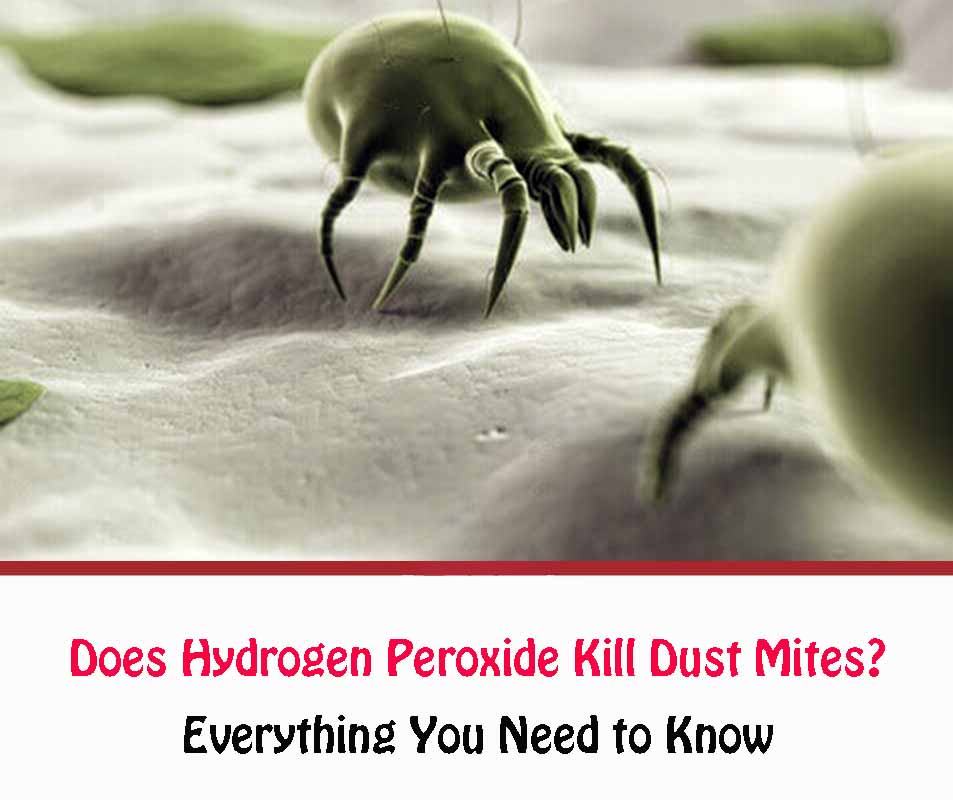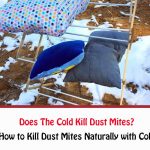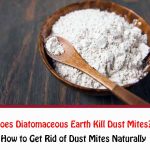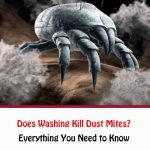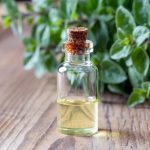When these microscopic creatures begin to create problems for you and your family, you probably want to get rid of these dust mite infestations as fast as possible.
The best way to kill these dust mites can be done by using everyday household products, including hydrogen peroxide. But you might wonder whether the hydrogen peroxide is effective for eliminating dust mites or not.
Well, let us discuss the details in depth.
What Is Hydrogen Peroxide?
Contents
- 1 What Is Hydrogen Peroxide?
- 2 Does Hydrogen Peroxide Kill Dust Mites?
- 3 Is Hydrogen Peroxide Safe For Humans And Pets?
- 4 Hydrogen Peroxide Side Effects
- 5 How Does Hydrogen Peroxide Kill Dust Mites?
- 6 How To Remove Dust Mites With Hydrogen Peroxide
- 7 What Works Better Than Hydrogen Peroxide?
- 8 Other Methods To Kill Dust Mites
- 9 Final Words
Hydrogen peroxide is the composition of two oxygen and hydrogen molecules, a chemical with antiseptic properties. You should know that it is also famous for an anti-bacterial and anti-fungal agent, which can be used as a mouthwash or applied over minor wounds.
However, you must know that only a highly diluted solution is used to treat minor cuts because the concentrated chemical can have lethal effects on your skin and overall health. You might notice that common household products contain only 3% of hydrogen peroxide.
According to the recent studies, it has some bleaching effects, although not as strong as chlorine bleach. That means hydrogen peroxide is capable of killing dust mites due to its bleaching properties.
Does Hydrogen Peroxide Kill Dust Mites?
Yes. You might have heard that hydrogen peroxide helps eliminate dust mites. There are no such studies that prove the effectiveness of hydrogen peroxide over the mortality rate of dust mites.
In a recent study, hydrogen peroxide is used as a washing agent and combined with benzyl benzoate to test the mortality rate of dust mites.
And it was recorded that the population of these microscopic pests is decreasing with constant treatment. As you already know, hydrogen peroxide is known for its disinfectant properties and bleaching effects, which means it is safe to assume that the diluted chemical effectively kills dust mites.
Is Hydrogen Peroxide Safe For Humans And Pets?
As discussed above, exposure to concentrated hydrogen peroxide is not safe for humans and pets as it can irritate your skin or allergic symptoms.
You should also know that hydrogen peroxide can react with direct sunlight, which means you have to store it in an opaque container.
So, in case you are exposed to this chemical, ensure that you seek medical advice or treatment to ensure nothing gets out of hand.
Hydrogen Peroxide Side Effects
Now you know hydrogen peroxide is a mild chemical, which means some people might experience skin irritations and redness when exposed. However, you are less likely to experience any severe complications after getting exposed to the chemical. Still, it would be better for you to seek doctors’ advice if you have severe allergic symptoms or feel dizzy.
How Does Hydrogen Peroxide Kill Dust Mites?
Hydrogen peroxide is a highly reactive chemical, which means even exposure to sunlight can cause disintegration in chemical bonding. Thus, you have to store the chemical in opaque containers.
When it comes to killing these microscopic creatures, you can spray the diluted solution on rugs, carpets, or mattresses where the infestation is suspected and leave it to settle down deep inside the fibers to show its effect.
Or you can also add some Hydrogen Peroxide while doing your laundry to eliminate dust mites present inside the clothes. However, you need to know that Hydrogen Peroxide effectively removes difficult stains, but it can also leave some yellow stain on clothes.
Note: Never use or mix Hydrogen Peroxide with vinegar, ammonia, or chlorine bleach, as they can produce lethal gasses, which can deter your health and overall well-being.
How To Remove Dust Mites With Hydrogen Peroxide
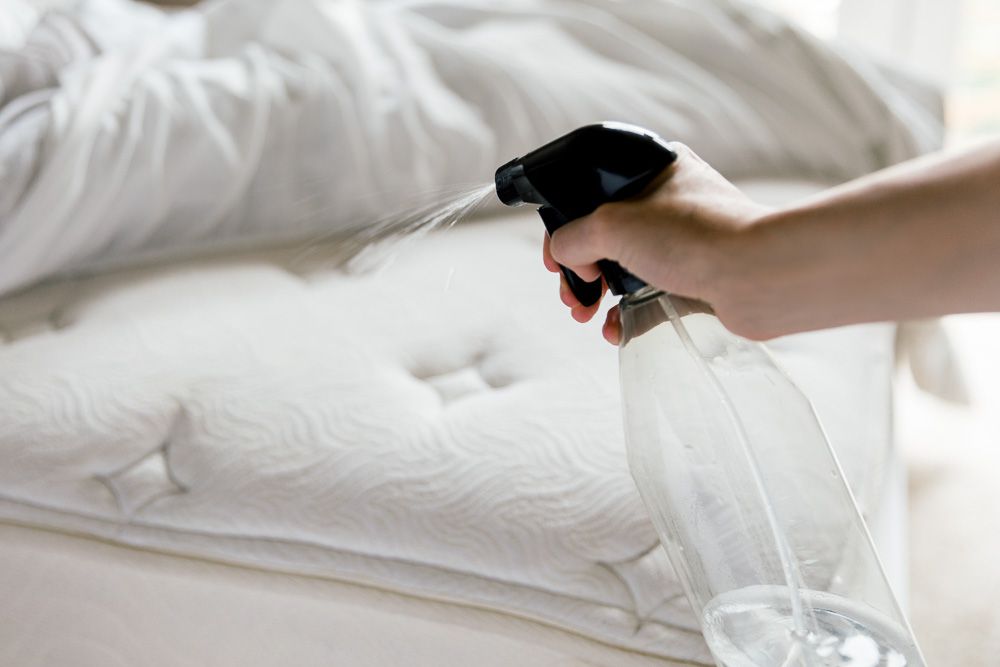
Hydrogen Peroxide can also come in handy when it comes to killing dust mites.
All you need to do is dilute the concentration chemical and pour it into a spray bottle.
After that, you have to spray the solution over the infected area and leave it for several hours.
Then, the Hydrogen Peroxide particles will begin to show their effect and will probably kill dust mites. But you know these stubborn microscopic creatures are not that easy to remove. So, it would be great for you to follow a cleaning regime and include using Hydrogen Peroxide to eliminate most of the dust mite population.
What Works Better Than Hydrogen Peroxide?
There is no doubt Hydrogen Peroxide is the most suitable approach for eliminating dust mites. But as discussed above, it has some side effects, which can cause skin irritation and other problems even when exposed to a highly diluted chemical. Apart from this, when you use Hydrogen Peroxide in your laundry, it also leaves yellow stains on the clothes, disturbing for some people.
Although Hydrogen Peroxide is good for getting rid of dust mites, these are not as effective as dust mite sprays, baking soda, essential oils, or other household cleaning products. You can also use essential oils, vinegar, baking soda, alcohol, etc., to kill dust mites.
Other Methods To Kill Dust Mites
There are many effective alternatives for killing dust mites that you can use to prevent future infestation. Some of the methods are discussed below:
-
Essential Oils
Essential oils are used by almost every household that has been facing the problem of dust mite infestation. Recent studies have shown that essential oils are effective in eliminating dust mite populations.
All you need to do is make DIY essential oil spray and sprinkle it over the infested area. Or you can also add a few drops of essential oils during the final round of laundry and kill almost every creature present in the fabric or cloth.
-
Baking Soda + Vinegar
The mixture of both is effective in eliminating most of the dust mite population. You need to make a solution including ¼ of vinegar and two tablespoons of baking soda or according to the infestation. After that, you need to fill the solution in a spray bottle and spray it over the infested area.
Final Words
Now you know how to get rid of the dust mite population using Hydrogen Peroxide and other methods.
